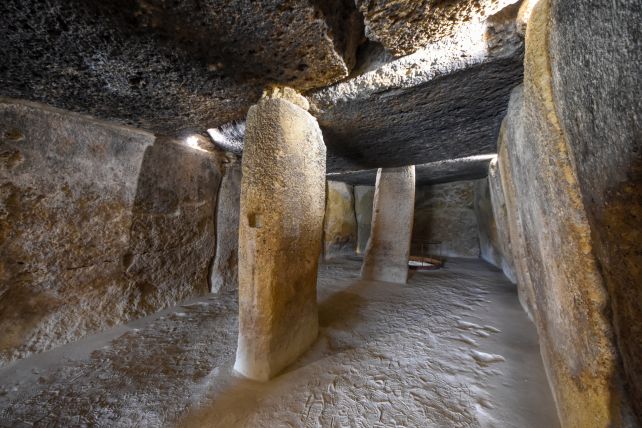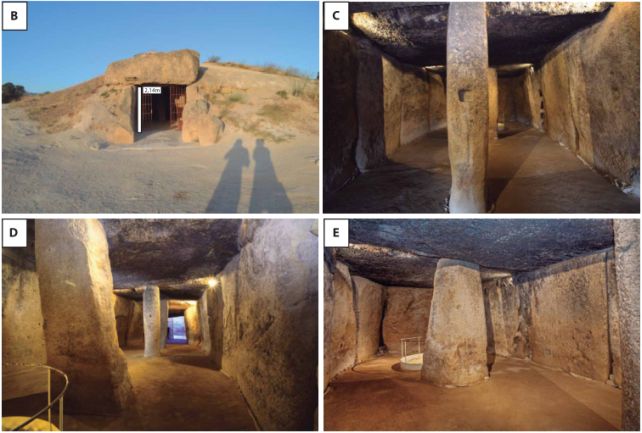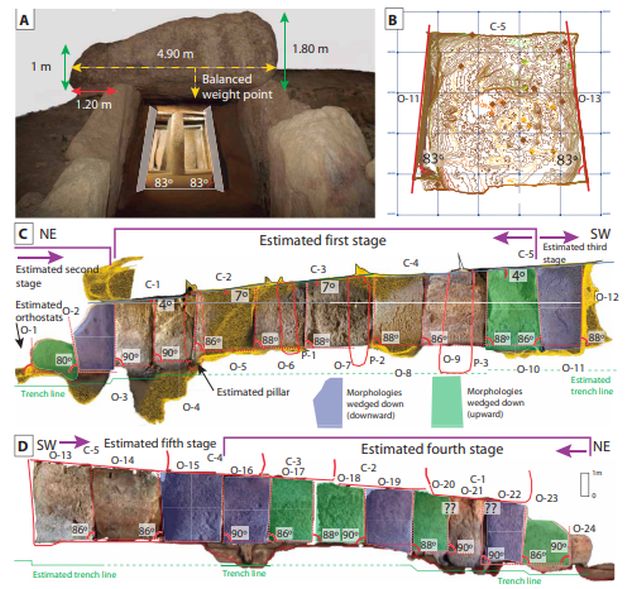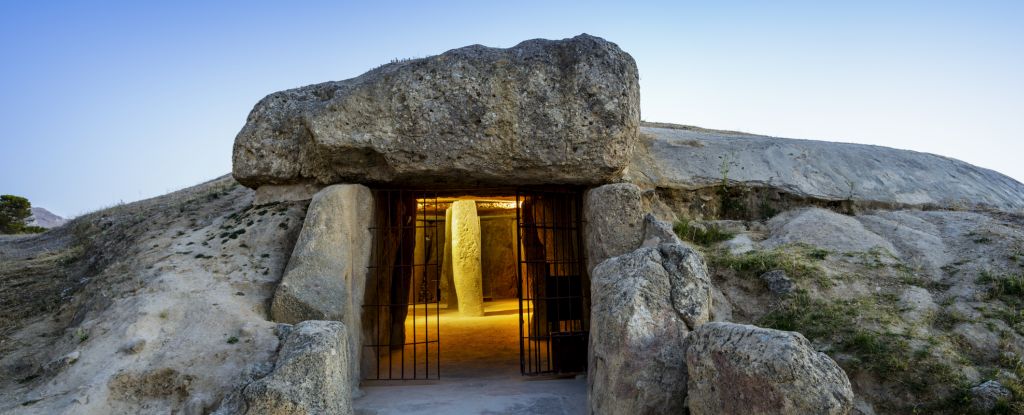Entering the Dolmen of Menga is like entering a different world. The ancient building was built almost 6,000 years ago and still stands perfectly intact today. It is made of stones that weigh up to 150 tons each.
If you think that such a construction feat would have required a sophisticated, interdisciplinary understanding of engineering principles, you are not wrong.
A new study has shown that the Neolithic people who built Menga had high skills, knowledge and ability to solve complex engineering problems.
“What initially sparked my interest in the Menga Dolmen was undoubtedly its monumentality. When I entered its interior and contemplated this colossal monument from the Neolithic period, my curiosity to learn more about this dolmen was aroused,” geoarchaeologist José Antonio Lozano Rodríguez of the Oceanographic Center of the Canary Islands in Spain told ScienceAlert.
“They were people with very important knowledge of early science, which shows how advanced the intellectual, practical and technical skills of these societies in the south of the Iberian Peninsula were almost 6,000 years ago.”

The Dolmen of Menga is truly a wonder of the ancient world. It was built into the side of an earthen mound between 3800 and 3600 BC. The great chamber is 27.5 metres (90 feet) long and lined with huge stones on the walls and ceiling.
It is one of the largest megaliths in ancient Europe and the capstone, with an estimated weight of 150 tons, is one of the largest stones ever moved in Neolithic Europe.
The site appears to have been used for burials, as grave goods were reportedly discovered there. And it must have been of great importance. Previous analyses have shown that a great deal of work went into its construction.
Lozano Rodriguez led previous investigations that revealed that not only was the asymmetry of the dolmen walls intentional and designed around the solstices, but also that the soft rock used in the construction came from about a kilometer away from the site, showing that the builders knew how to quarry and transport huge boulders.

The Dolmen of Menga consists of a chamber lined and roofed with large stones. Three stone pillars along the length of the chamber support the weight of the roof. The 32 huge stones have a combined weight of around 1,140 tons.
To find out how these stones were placed and the monument was constructed, Lozano Rodríguez and his colleagues conducted an analysis that included sedimentology, archaeology, paleontology and petrology.
One of the biggest challenges was transporting the large stones, which the researchers found would have required a good understanding of friction.
The simplest method of transport would have been sledges running on a prefabricated wooden track. Since the quarry was uphill from the construction site, this also required skills in acceleration and braking.
They note that the stones are all classified as “soft” sedimentary rocks, mainly limestone, which had to be handled carefully to avoid damage. Despite this, they were placed with millimeter precision. They also interlock and lean slightly against each other, which is an indication of the manner and order in which they were placed.

And they are firmly wedged into the bedrock. This is the first time this feature has been observed at Menga in 200 years of research: The foundations of the stones are deep plinths that would have required careful placement, requiring the use of counterweights and descent ramps to gently push the stones into position and raise them upright. This deep foundation would also reduce the need to lift the roof stones.
The pier stones were placed in a similar way, with deep foundations, but probably installed after the wall stones. And the wall stones are placed so that their tops slope slightly inward, giving the chamber a trapezoidal shape that is narrower at the top than at the bottom. This, researchers say, is a stroke of genius that allows for smaller capstones than would be needed for a wider roof.
“Almost 6,000 years ago, they used a relieving arch to solve complex problems of stress distribution, thus solving weight problems, which was one of the biggest structural problems they encountered when designing this great monument. This problem was also solved by using columns inside,” marvels Lozano Rodríguez.
“I was also surprised to see that the monument was designed to be partially buried, so that the capstones could be placed without the aid of ascending ramps.”
There is no doubt that we can learn a lot from this ancient, mysterious building – not only about construction techniques, but also about the ingenuity of Neolithic people and the value of being open-minded about the skills of our ancestors.
“The incorporation of advanced knowledge from the fields of geology, physics, geometry and astronomy shows that Menga not only represents a masterpiece of early engineering, but also represents a significant step in the advancement of human sciences and reflects the accumulation of advanced knowledge,” the researchers write in their article.
“Menga is a successful attempt to build a colossal monument that will last for thousands of years.”
The study was published in Scientific advances.

